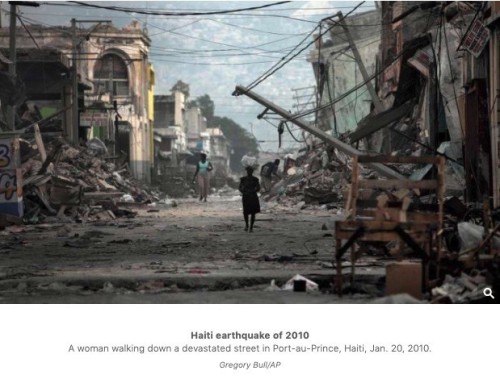Written by: Tara L. Braun
Image source: NY Magazine
The world of international higher education is normally a changing canvas but throw a worldwide pandemic on top of it and you have a mosaic of concerns. Internationalization has been interrupted on many U.S. campuses in the form of study abroad program cancellations and international students needing to consider returning home and forfeiting internships or Optional Practical Training opportunities. While this crisis has caused many shifts in thinking (and stress), it also promotes a whole new range of opportunities for higher education leaders.
Regulatory Changes
Executive orders filed by many state governors sealed the fate of learning face to face and forced the decision to go to virtual learning and presented challenges within the international classroom. Even more recent presidential proclamations have presented further challenges for U.S. international education with the suspension entry of immigrants who present a risk to U.S. labor markets. On top of concerns around the shift to online learning, choosing to stay in the United States or return home, and ongoing support services, international students also had to be concerned about their visa status. The recent and now reversed modifications from the Student and Exchange Visitor Program (SEVP) deeply confused the focus of international students returning to campus. This ruling would have deeply affected the ability of students being on campus and taking online courses. The aftermath of this proclamation, and decision to reverse it, caused much grief to both institutions and students but also made the United States appear to be unwelcoming.
Lessons Learned
Changes and executive orders due to COVID have caused a rapid review of current campus policies. Institutions plan for crisis differently, but there are common international student concerns that have arisen from the COVID pandemic that I am sure some schools wish they would have began changing before the world stopped. With some international students deciding to stay on campus, navigating housing logistics was a concern. Most campuses established methods to assist students in identifying housing or made arrangements for them to stay closer to support offices. International students experienced financial anxiety with unexpected expenses for housing or temporary layoffs from on campus jobs. Many campuses, including Michigan State University, created an international student emergency fund to help in times of distress. Campuses who were not strong with online education, had to quickly transition to a virtual classroom. This posed issues with time zones, internet access, and quality of instruction that caused additional stress for students and professors. A leader in online education, Southern New Hampshire University, was committed to providing an engaged online learning experience by addressing equity in instruction with asynchronous classes.
Looking Forward
Looking forward to the fall, how could institutions use some of these practices to improve the student experience? Topics of importance will be fostering community, addressing the digital student divide, supporting faculty, providing institutional support, managing expenses, and encouraging ongoing communication. At a time in which U.S higher education has shifted its focus from the dropping domestic enrollment to the international student population, recruiting these students will also become a concern. Planning for a time of no international travel will become essential to campuses who have large incoming international populations. Institutions will need to review maximizing existing collaborations, boost virtual recruitment efforts, and rally alumni and current student to recruit. Campuses will also need to plan for continued concerns around immigration regulations and how they can adjust their own campus policies to accommodate student needs. Institutional flexibility will be extremely important in the next coming months.
Embrace the New Normal
As the global fight against COVID continues, it is a time for institutions to review their own policies and determine if it may be time for a new international education strategy. Adopting to a new normal could mean improvements in general messaging, branding and marketing, reviewing immigration campus processes and policies, international student recruitment goals, and reviewing international student scholarships methods. Now is the time to look at partnerships in a more comprehensive way of global engagement and be able to change and adapt to the changing world around us.
 Tara Braun has fifteen years-experience in international higher education ranging from study abroad, international partnerships, recruiting, immigration, and student programming. She is an active member of NAFSA, has served in leadership roles at the NAFSA state level, advocacy groups, and presents at numerous conferences. Mrs. Braun holds a Master’s in Career and Technical Education, is a doctoral candidate at Central Michigan University, and serves as the PDSO and Associate Director of International Admissions and Immigration at Calvin University. Her dissertation work focuses on the re-acculturation experiences of Ghanaian students who studied in the United States. Tara can be reached at braun1t@cmich.edu.
Tara Braun has fifteen years-experience in international higher education ranging from study abroad, international partnerships, recruiting, immigration, and student programming. She is an active member of NAFSA, has served in leadership roles at the NAFSA state level, advocacy groups, and presents at numerous conferences. Mrs. Braun holds a Master’s in Career and Technical Education, is a doctoral candidate at Central Michigan University, and serves as the PDSO and Associate Director of International Admissions and Immigration at Calvin University. Her dissertation work focuses on the re-acculturation experiences of Ghanaian students who studied in the United States. Tara can be reached at braun1t@cmich.edu.
The Academic Credentials Evaluation Institute, Inc. (ACEI), was founded in 1994 and is based in Los Angeles, CA, USA. ACEI provides a number of services that include evaluations of international academic credentials for U.S. educational equivalence, translation, verification, and professional training programs. ACEI is a Charter and Endorsed Member of the Association of International Credential Evaluators. For more information, visit www.acei-global.org.
















